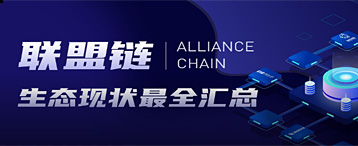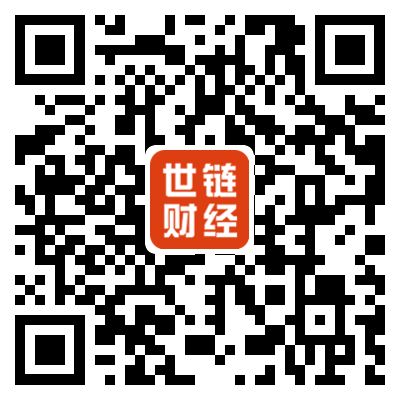-
How to implement blockchain in supply chain? 7 steps to implement blockchain
 linkweb3
linkweb3 2022-12-08
2022-12-08 4524
4524 Tech
Tech
-
Summary:How to implement blockchain in supply chain? In this article, we will introduce 7 steps to implement blockchain technology in the supply chain.
Many well -known companies have been using the blockchain to optimize their supply chain and ask partners to do this, because new technologies can save them billions of dollars, simplify work flow, eliminate errors and inaccurate, and improve them, and improve them. Customer confidence. In any supply chain, stakeholders deal with countless interdependence and scattered parties around the world, and they must exchange accurate information in time. In this article, we will introduce how to implement blockchain technology in the supply chain.
What is a blockchain?
The blockchain is regarded as a permanent, irreversible distributed ledger to record all valuable transactions. The uniqueness of the blockchain and other data storage technology is that it lacks centralization. No individual or entity can fully control the blockchain, but is managed by nodes. Each node involved in the transaction can access the classification account across multiple machines, whether as a direct participant or a verified person. This allows decentralization and cross -network sharing control to instill trust into the trading ecosystem. All transactions attached to the blockchain are first verified by members (also known as miners). This method is very unique and can be deleted from the transaction. Theoretically, while reducing costs to the maximum extent, it creates efficient and effective commodity and service transfer.
Advantage of blockchain
Thanks to the use of Enterprise Resource Planning (ERP) system, since the 1990s, the supply chain information sharing has made great progress under the leadership of Wal -Mart and Procter & Gamble. However, in large supply chains involving complex transactions, visibleness is still a challenge.
In order to explain the current financial classification accounts and the limitations of the ERP system world, as well as the potential benefits of the blockchain world, let us describe a hypothetical scenario: a simple transaction involving retailers from suppliers, and providing fulfillment to suppliers to perform performance Banks that need to be operated by the order. Transactions involve information flow, inventory flow and capital flow. Please note that the given process does not produce the three parties involved in the financial classification accounts. The most advanced ERP systems, artificial auditing and inspections cannot be reliably connected to the three processes, which makes it difficult to eliminate the implementation of errors, improve decision -making, and solve the conflict of supply chain.
The blockchain in the supply chain
The supply chain is a complex system that involves multiple entities to work together. It meets consumer needs by appreciation from the raw material stage to the final performance process. This is the main chain, which consists of a secondary chain and a third -level chain to form a supply chain network or ecosystem. The complexity in the chain is also created by transactions (physical and information), and information transactions are required to match physical transactions. It is believed that this consistency will provide transparency and traceability in the supply chain, which is very important.
The trial of the blockchain in the supply chain environment follows this intention. If it is properly implemented, the blockchain environment should be able to create verified, unable variable transactions in the supply chain, thereby enhancing trust. For many supply chain companies, this is a seductive prospect.
In the past few years, companies such as IBM, Wal -Mart, Zurich Insurance, Masky, Nestlé, United Leahua and Amazon have invested in pilot supply chain projects based on blockchain to develop and test the technology. However, some researchers in this field urged to be cautious that they believe that despite the huge potential, the risks are still very large, and many operating challenges still need to be resolved. It has been invested in a pilot supply chain project based on blockchain to develop and test the technology.
However, some researchers in this field urged to be cautious that they believe that despite the huge potential, the risks are still very large, and many operating challenges still need to be resolved. It has been invested in a pilot supply chain project based on blockchain to develop and test the technology. However, some researchers in this field urged to be cautious that they believe that despite the huge potential, the risks are still very large, and many operating challenges still need to be resolved.
Today's supply chain challenge
1. Lack of visibility of end -to -end
Lack of transparency can cause costs and customer relationships, which will have a negative impact on the brand. Blockchain technology provides a solution for traceability and traceability. Allow system participants (including suppliers, manufacturers, courier, and final customers) to access this information, which helps build trust between them.
2. Efficient supply chain risk management
The company's processes usually face different types of risks, such as fraud and violation of the rules of behavior. Effective risk management plans are essential for effective supply chain management. The blockchain allows accurate product tracking, which helps many risks in the prediction chain and allows all participants to take appropriate action.
3. The ripple effect of extending the value chain
Due to the extended complex supply chain, many organizations are facing huge variability risks. Several stakeholders, including suppliers, distributors and consumers, have significantly increased the risk of supply chain. Blockchain provides scalability, and can access any extensive databases from multiple locations around the world.
4. Sudden demand changes
The rapid changing environment requires enterprises to rapidly respond to sudden changes in demand at a higher and higher frequency. It requires a technology that can automate the process and adjust them in time to adapt to the required changes. The blockchain is the answer.
The powerful combination of blockchain and supply chain can help reduce errors, avoid product delays, eliminate fraud activities, and increase the trust of consumers/suppliers. However, the benefits of blockchain on the supply chain are not stopped.
5. Excess costs caused by fraud or repeated products
Blockchain allows real -time product tracking, which helps significantly reduce the overall cost of mobile items in the supply chain. By strengthening traceability, under the circumstances of product recalls or quality issues, the company can accurately isolate the problem to maximize the cost expenditure trying to locate the fundamental cause.
Does your company need a blockchain?
Blockchain and smart contracts are great technology, but you don't need to implement them in your business. In your case, these innovations may be useless, for example, if your partners and transaction opponents in the supply chain do not agree to use the blockchain on them.
If the following situation occurs, it is not worth introducing the blockchain:
Your logistics and supply chain are quite simple (short);
Your business is linked to cash and/or personal relationships, and your partner does not want to transition to "digital" (typical developing countries);
The data generated by your logistics is impossible or too difficult to use a single standard and/or formalize.
In addition to the situation that is not worth using blockchain technology, you can consider implementing the blockchain in the supply chain.
7 steps to implement the blockchain in the supply chain
Step 1: Define cases
The first step to implement the blockchain is to determine how you will use it. There is no need to describe the technology itself at this stage, only use cases. A simple example is Wal -Mart's food traceability plan. The transaction network created a blockchain with IBM to track the life path from manufacturers to supermarket shelves.
The following information is collected: their platform:
Manufacturer (name, location, technology and equipment);
The carrier (transportation, equipment, route, transportation conditions);
Participants (name, identity, cooperation history, etc.);
Products (ingredients, shelf life, storage conditions, etc.)
Wal -Mart launched this project to track counterfeit, spoil and fakes, and in the absence of irresistible, such as infection with Greenland, quickly track the source of infection and infection.
But this is not the only way to use the blockchain in the supply chain:
Alibaba and Jingdong use blockchain to track the authenticity of food, baby supplies, luxury and alcoholic beverages.
UPS is developing the blockchain to simplify the billing and workflow.
Fedex started a blockchain project to store transportation records in order to use this data as a true source during the dispute resolution.
Step 2: Attract the partner to join the project
Usually, about 30 transaction opponents participate in the global supply chain, with a maximum of 10 of the local supply chain. When the blockchain is implemented in a specific supply chain, it is necessary to ensure that they all start using new technologies, otherwise the "history" of goods will be incomplete.
If you are a big "fish", then it is enough to threaten to refuse cooperation, just like Wal -Mart did it after the next E. coli infection. If your influence is not so great, you need to show your partners the benefits of switching to the blockchain:
Reduce the cost and complexity of the logistics process;
Reduce fraud and management costs;
Improve data quality and reliability;
Accelerate production and distribution;
Sales increase.
If your partner is already using the blockchain to optimize the supply chain logistics, it is best to join their project instead of creating your own project. In this case, you will save a lot of money and time, but you are likely not to get a lot of rights about the management and development of blockchain platforms.
Step 3: Define the matching method
When all participants in your sales chain (or pilot project) agree, you need to choose a method to check the data in the administrative registration book. It is about blockchain type and consensus algorithm.
For example, in the Hyperledger Fabric, a separate service involves the formation of the block. Weicin uses authoritative certification (POA). The Morgan Chase blockchain blockchain is used to use the modified workload certificate (POW) version (POW). Which algorithm choice depends on the rights and responsibility distribution between the blockchain platform and the supply chain participants. For the supply chain, it is best to choose a private or blockchain alliance, because they are fast and can hide some information: financial computing, document content, etc.
Step 4: Choose the right platform
Next, you need to decide which blockchain you need. For this reason, analyze the use cases and understand:
Which processes will be digitized and transferred to the blockchain?
What information will the blockchain collect and how to collect?
How fast should the system process the transaction?
Which information needs to be manually input, which information comes from automated Internet of Things sensors and other sources?
How many participants will there be in the system and what are their roles?
How to verify the data?
Who and what information will be available?
other...
After understanding which blockchain you need, you should see if there are ready -made solutions to meet your requirements. It will be cheaper and faster. The easiest way to deal with this problem is to check the cases of other logistics projects. It is best to use the solutions that can be used as a supply chain, that is, the service. These include SUKU, VEChain, Provenance, Shipchain and most IBM blockchain development.
Step 5: Develop smart contract
The next step of implementing the blockchain in the supply chain will be the development of smart contracts. These are computer algorithms used to automate formal business processes and exchange value (such as money, goods, property rights, information, or documents). They speed up and reduce process costs, eliminate middlemen, and help crack down on corruption and human factors.
Their development follows the following rules:
The availability of the electronic signatures of all participants in the transaction;
The contract terms must be expressed in a mathematical manner;
The easiest possible logic: if event A occurs, then we start to move 1, if event B occurs, then we start to move 2;
There is a software environment, such as Ethereum or only chain blockchain;
The availability of performing contract tools: prophecy machine, settlement account, DAPPS application, IoT device.
It is optional to create a smart contract by yourself.
Step 6: Application development
With blockchain and smart contracts, you can start developing an application -a program you will use to manage the system. If you do not have a development team, it is best to hire a development company (technical partner) for this. With their help, you:
Determine the technical requirements of the application;
Develop UX/UI applications for different user characters;
Formulate the scope of power, route map and development budget;
Software products that have been tested;
other ...
Step 7: Deploy the blockchain
The last step to introduce the blockchain into the supply chain is to test it in the real business process. Generally, a pilot project will be launched for this, that is, a small -scale test on a small chain, which involves all user roles: manufacturers, carrier, distributors, retailers, buyers and financial contractors.
For example, Wal -Mart tested its mango supply system from Mexico to the United States. Their pilot projects involve 16 farms, 3 brokers, 2 packaging lines, 2 warehouses and Wal -Mart retail stores. After determining the concept, the online retailer expands pilot projects to supply pork from China and supply packaging products in the United States, and then expands to other supply chains.
You need to take the same way. Select a simple (short) supply chain, you can use all user roles on the blockchain platform. Test the system on this chain, find out all the problems and solve them, and then bring the blockchain into all the logistics processes of your business.
The above content introduces the implementation steps of the blockchain in the supply chain, as well as issues that need to be paid attention to. Blockchain technology may subvert the supply chain information system in the future, the technical ecology is developing rapidly, and innovative applications are constantly. The adoption of the blockchain will depend on the implementation of many variables. The entire industry requires more developers, interoperability, and better skills development and implementation of successful cases.
Disclaimer:As an open information publishing platform, shilian only represents the author's personal views and has nothing to do with shilian. If the article, picture, audio or video contains infringement, violation or other inappropriate remarks, please provide relevant materials and send it to: 2785592653@qq.com.
Hint:The information provided on this site does not represent any investment suggestion. Investment is risky, and you must be cautious when entering the market.
ShilianFan group:Provide the latest hot news, airdrop candy, red envelopes and other benefits, WeChat: rtt4322.
















